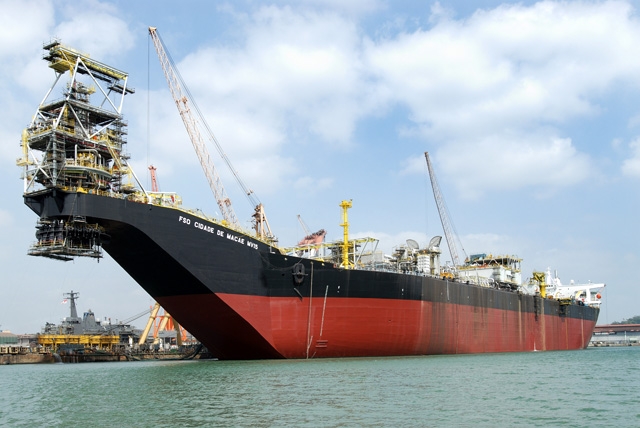
Sembcorp Marine knocks Keppel off top spot because of these 6 reasons
It's beyond SMM's stronger growth.
Macquarie Equities Research downgraded Keppel Corp to Neutral from Outperform as further upside is limited amid a lack of catalysts and declining earnings. It advised investors who are keen to play the up-cycle in oil rig demand should switch to Sembcorp Marine. Here's why:
1) SMM has a much stronger earnings growth profile over the next three years
A big spike in SMM’s (SMM SP, OP, S$4.93, TP: S$6.00) order book this year will result in strong revenue and earnings growth over the next three years, in our view – as high as 16% earnings CAGR from 2012-15E vs a decline of 3% for KEP.
We think KEP’s earnings growth will be much inferior as it struggles to maintain its high order book and also a Jack-up driven order book which will mostly be delivered over the next 18 months.
2) SMM’s venture into the lucrative Drillship market
SMM has taken a backdoor entry into the lucrative Drillship market via orders from Petrobras that have to be built in Brazil. Given that the Drillship market has always been dominated by the Korean yards (given their large yards and experience), this was the only route possible for a new entrant, in our view.
Although a high risk, high return strategy, we think if SMM is able to deliver the 1st Drillship to Petrobras on time in 2Q15 and is able to showcase a more efficient design vs what the Korean yards offer, a new segment would open up to SMM. Other oil majors might also come to SMM starting 2015 for new Drillship orders to be built in Singapore.
3) SMM’s new shipyard in Singapore gives margin upside
While we expect the overall O&M business’ margin profile to be very similar for KEP and SMM (around 14%), we think the upside risk lies with SMM given that its new yard in Singapore can potentially double its ship repair revenues which are the highest margin in nature (20-25% EBIT margin business vs 10-12% for rigs).
SMM makes ~S$650m in ship repair revenues annually which could potentially double to S$1.3bn if it is able to get more ship repair jobs once the new yard opens next year.
In comparison, KEP has been getting S$1.3-1.5bn of ship repair revenues annually. With higher capacity, we think SMM would be competing for a few ship repair jobs that KEP has been getting while also attracting some new jobs that have otherwise been going to Chinese and Middle-eastern yards
4) SMM has a more balanced order book mix
We think SMM’s current order book is more balanced and has higher quality contractors on the book. While KEP does not have any Semi-subs on its order book now ex-Brazil, SMM has 2. KEP’s order book has 31 Jackups versus 15 for SMM but SMM’s orders are mostly from top-tier contractors in the US and Norway – the likes of Atwood, Seadrill and Noble.
5) Higher chances of getting a special dividend through SMM
SMM’s net cash balance sheet and more pro-dividend payout management has allowed it to declare special dividends in last 2 years, thus taking the div yield to 6-7% in 2010 and 2011.
We believe SMM could continue with its special div policy and the quantum would depend on the capex levels. Although for 2012 and 2013, SMM’s capex would go up to S$600-700m annually from a normal average of S$150m annually (due to investment in 2 new yards in Singapore and Brazil), we think the management would still give some special dividends given the robust net cash position.
6) SMM is the cheaper and pure play
KEP and SMM are both trading at ~13x 1 year forward earnings despite SMM having a much stronger earnings growth momentum. On P/E, we believe SMM should trade at 1 standard deviation above its 5 year mane levels, closer to 16x.
KEP is trading at 2.3x 1 year forward P/B which is close to its 5 year mean levels. Given falling ROEs for KEP over next 3 years (from 24% in 2012 to 14% in 2014), we believe there is no room for further P/B multiple re-rating for KEP.
On the other hand, SMM’s ROEs are expected to stay strong and above the 25% levels according to our analysis and thus SMM deserves to trade at least at mean multiple of last 5 year which is 3.9x vs 3.5x that it is trading now.
























 Advertise
Advertise






